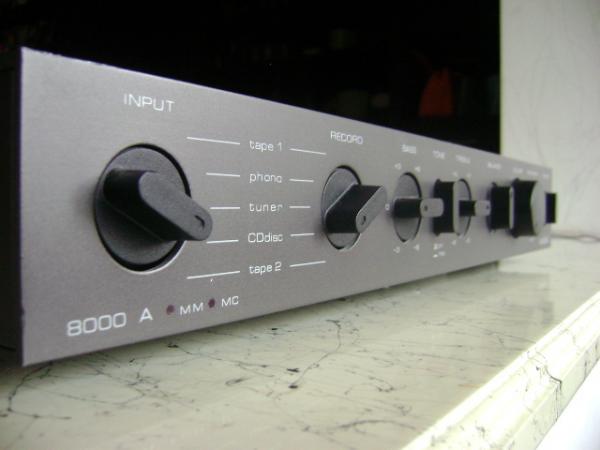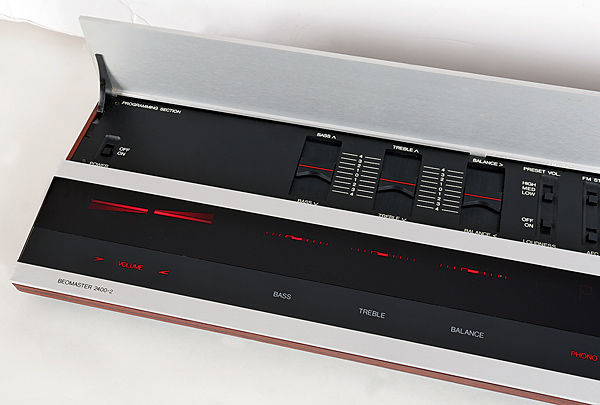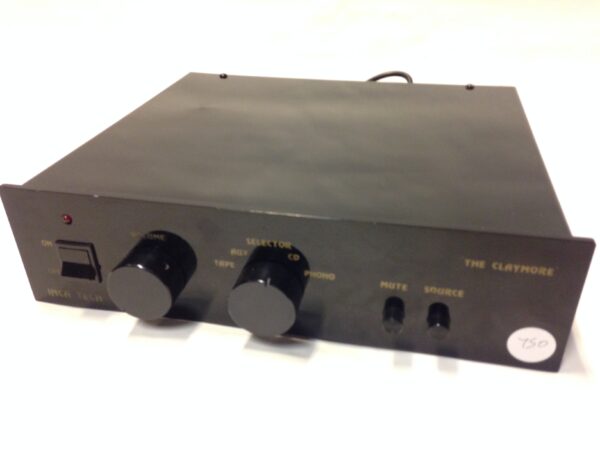Farad Azima, his brother Henry, and Stan Curtis were the founding directors of Mission Electronics, which was founded in 1977. Another intriguing new British hi-fi firm to emerge from the ‘Silicon Fen’ around Huntingdon, Cambridgeshire – the UK’s equivalent of Silicon Valley, if you will – it quickly established itself with the likes of A&R Cambridge, Lecson, Meridian, Audiolab, and, more recently, dCS.
The aggressive 770 loudspeaker was Mission’s debut offering. It was an unusually proportioned huge two-way standmounting design amid a sea of three or even four ways at the time, and it was the first audiophile design to use a polypropylene drive unit. It was well-received and well-sold, which would have sufficed for many businesses, but not this one. In 1979, the 774 tonearm was released, which was reported to be the first DC-coupled design. Soon after, the Mission 700 loudspeaker, which used an inverted driving unit array and retailed for £129 per pair, was released.
Since the 770 was introduced in 1980, this is arguably the company’s most important product. Stan Curtis’ 771 preamplifier and 772 power amplifier were a no-holds-barred high-end combo. The former was designed around sophisticated discrete operational amplifier circuit blocks and had a distinctive design. According to Curtis, the latter was based on three cascode pairs of MJ4502/MJ802 power transistors and was a derivative of Lecson’s ill-fated AP4 Class A power amplifier. A pair of monoblocks shared a massive Holden & Fisher toroidal transformer and a pair of enormous Sprague computer grade capacitors inside its large aluminium cabinet.
“This amplifier, as I recall, was good for around 160 watts per channel into 8 ohms and something like 250 watts per channel into 4 ohms,” Curtis recalled. “At the Harrogate Audio Fair, the prototype had a revolutionary feedback system that greatly minimized the affects of the loudspeaker connections,” says the company. A third connection connected the loudspeaker terminals to the amplifier and returned a signal. It was easy to hear it working, but the concept was abandoned because it was too complicated for the average buyer at the time.”
The 771 preamp wasn’t immune to new ideas, either. Moving coil, moving magnet, two auxiliary inputs, and two tape inputs were all selectable using the left hand input selector. Low frequency and high frequency bandwidth controls were located next to it. “The three positions selected various settings that regulated the system’s overall frequency response,” Curtis explained. “A row of toggle switches controlled two tape positions, stereo-mono, three loudspeaker outputs (switched by relays inside the power amplifier), DC or AC connection, and a gain switch (10dB or 20dB cut) to guarantee the volume control always worked in its most linear range.” The picture was finished by volume and balance settings.
Both the 771 and 772 were over-engineered, with the former having three sets of speaker terminals and the latter having several loading choices for pickup cartridges. The standard power fuse was replaced by a big contact breaker positioned above the power cord on the rear panel because the 772 could demand so much electricity. This combination served as the foundation for all Mission amplifiers that followed, all the way up to the Mission Cyrus series of the mid-1980s. It was well-received at the time, and was heralded as truly no-expense-spared British high-end; the latter was certainly true, as a new pair of them would set you back over £1,500 – roughly five times the cost of a new Linn LP12 turntable.
Despite its clean, powerful, and spacious sound, the 771/772 didn’t take long to gain popularity and impact. It was quickly supplanted by the Mission 776/777 pre/power combo of 1982, which was considerably more audacious. Instead of bipolar transistors, the 777 used paralleled complementary FET output devices, which broke with Mission tradition. There were no capacitors in the direct signal path because it was a shunt feedback DC-coupled design. “This meant that there could be a problem with a DC offset voltage developing across the loudspeakers,” Stan Curtis noted. This was minimized in the factory by careful selection of various resistors, but the setting expected that the preamplifier’s output resistance would be the same as the 776. Replace the pre-amp, otherwise you risk having inadequate voltages across the loudspeakers.” As a result, the 777 could only be used with the 776. The brutalist diecast alloy front fascias were as striking to look at as they were to hear.
This was phased out in 1984, replaced by the significantly smaller and simpler Mission 778 integrated, which in turn became the foundation for the Mission Cyrus 2 – which lasted until the early 1990s. Meanwhile, the firm released its first Compact Disc player the same year, and by the late 1980s and early 1990s, Mission had established itself as the king of affordable loudspeakers, with the 760 being the best-selling loudspeaker in the UK for nearly four years. By the late 1990s, the 771 and 772 numbers had become the names of Mission loudspeakers, and the amplifiers with which they had previously shared them had become obsolete.







